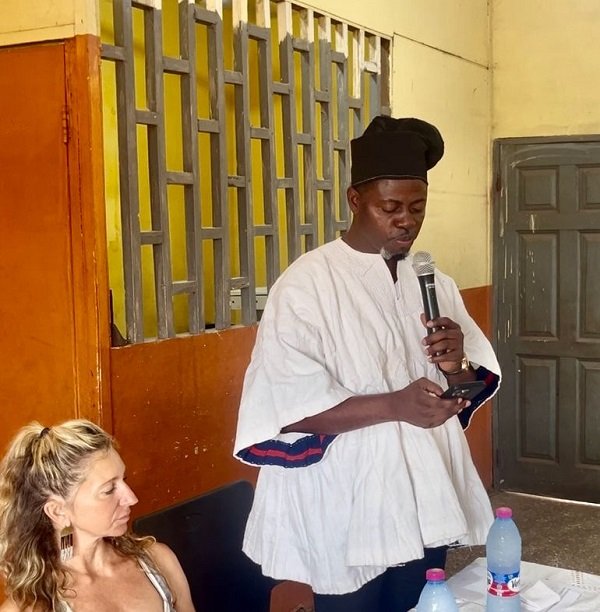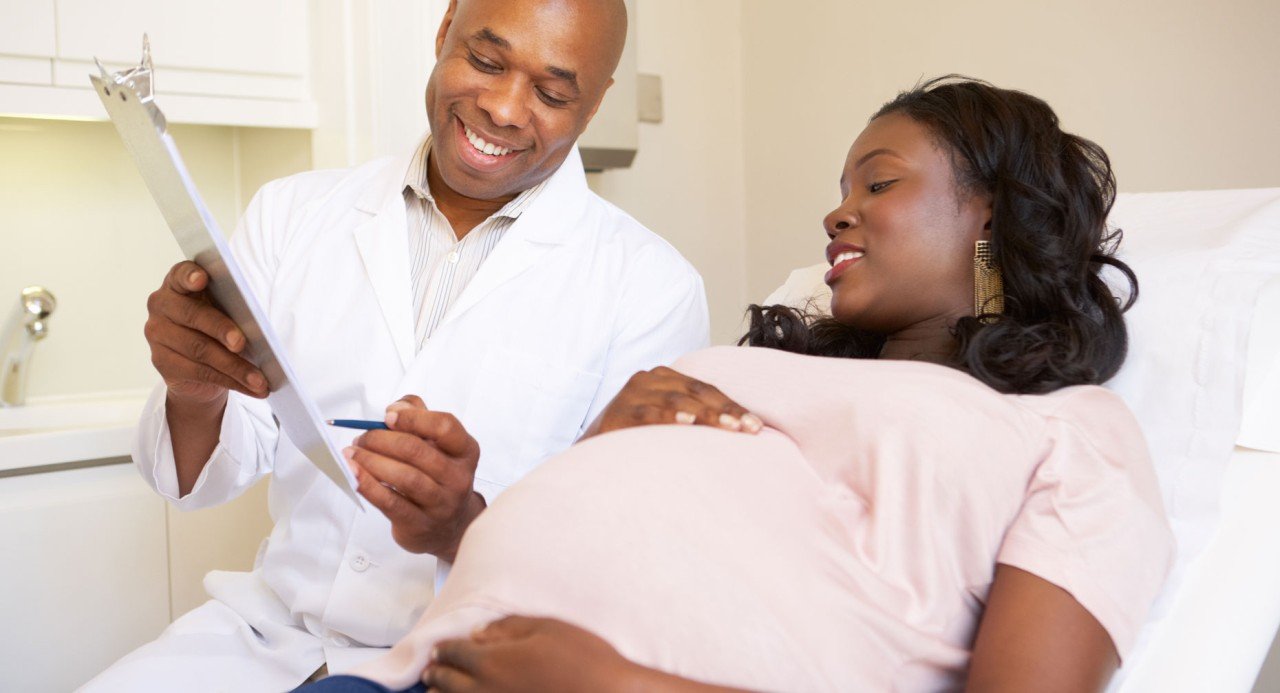News
Ho cured lepers complain of starving….Appeal for help
The restriction on large public gatherings is pushing residents of the Ho Cured Lepers’ Village to the brink of starvation.
This is because the churches and various non-governmental organisations (NGOs) which often visited the cured lepers regularly, and brought them food, clothes and detergents, have all put a hold on those benevolent activities, according to Mr Nelson Atito, caretaker of the village.
He said that apart from the churches and the NGOs, various schools and schools’ alumni in the municipality visited the village to present food and other items generously to the cured lepers but that was not the case anymore.
“Now, life is difficult at the village as food has become very scarce to the residents who cannot go to the town in search of jobs to raise some money for food, due to the stigma attached to them,” the caretaker revealed.
To make matters worse, the craftsmen and women at the village can no longer sell their artefacts as their customers in the municipality and beyond do no longer visit the village to buy those items.
Mr Atito made the remarks when the Vicarchie Ghana Limited shopping mall and the Sky Plus Hotel in Ho feasted the residents and also presented them with detergents, toiletries and clothes almost a fortnight ago.
He described the gesture by the mall and the hotel as timely and touching.
Mr Atito said that there were 70 residents at the village, who now wondered where their next meal would come from.
Meanwhile, he said that only one of the three boreholes at the village was functioning and that situation was adding to the woes of the residents.
The untarred road which led to the village had also now become very soggy and scaring off motorists, Mr Atito said.
The caretaker expressed gratitude to Mrs Victoria Letsa, Chief Executive Officer (CEO) of the mall and the hotel for the concern for the welfare of the village all the time.
Mr Atito said that although the Department of Social Welfare had come out with a financial assistance package for the residents, the lack of proper database on the residents was frustrating the smooth distribution of the package to the residents.
He thanked the Paramount Chief of Kpenoe, Togbe Kotoku XI, for periodically reaching out to the cured lepers with food and other items.
On her part, Mrs Letsa gave the assurance that the donations by the mall and the hotel would be sustained.
“We are committed to helping the cured lepers because they are part and parcel of the society,” she added.
Mrs Letsa commended the people of the village for strictly adhering to the protocols to prevent the spread of COVID-19 and urged them to keep it up.
From Alberto Mario Noretti, Ho
News
Support Street Academy to Break Cycle of Poverty in Society — Odododiodioo MP

Mr. Alfred Nii Kotey Ashie, the Member of Parliament for the Odododiodioo Constituency in the Greater Accra Region, has assured the Accra Street Academy of his support in achieving its mission of uplifting vulnerable children within the community to break the cycle of poverty. “Without the needed support, your efforts may go round in circles due to the enormity of the task. This should not be left on the shoulders of the Academy alone. You need support from both government and the private sector. With that, the Academy would be in a good position to shape the future of these children on the streets,” he said.
The Accra Street Academy, originally formed in 1985 as a boxing arena, now serves as a school for deprived children, with most of its population numbering hundreds of pupils being neglected children from the streets of Jamestown and its environs. Mr. Alfred Nii Kotey Ashie made these remarks at the annual stakeholders’ meeting and fundraising event held over the weekend under the theme “Empowering Street Children: Health and Wellness.” The event is one of the Academy’s annual programmes, organized to raise funds and other forms of support to aid the school in catering to the needs of the children and holding its Christmas get-together.
According to the MP, it is worth noting that these children are taught and provided with two meals and a snack daily through the support of benevolent members of society. In view of this, he promised to facilitate the acquisition of documents needed for the construction of an Astroturf within the school’s premises. He noted that “every child has the right to play, and therefore I pledged to do my best to secure the needed documents” for the project to commence.
The legislator disclosed that over the years, the academic programmes of the Accra Street Academy have transformed children surviving on the streets into successful adults. He therefore urged other members of society to partner with the school to “help pupils rise higher for a better Ghana.” In the 2025/26 academic year, 22 pupils were absorbed by the Accra Metro Education Directorate as they transitioned into various Junior High Schools, while still returning to the Accra Street Academy for academic support.
Ms. Yvonne Abba-Opoku, a chartered governance advisor and senior executive in the nonprofit and charity sector, stated that the best gift to give a child was education.
By Spectator Reporter
Join our WhatsApp Channel now!
https://whatsapp.com/channel/0029VbBElzjInlqHhl1aTU27
News
Attend antenatal clinics for safe delivery … expectant mothers urged

Mrs Regina Kudom, Senior Midwifery Officer at the New Atuabo Health Centre in the Tarkwa Nsuaem Municipality, has urged expectant mothers to attend antenatal clinic regularly for safe delivery.
She revealed that “in Tarkwa and its environs many pregnant women prefer staying at prayer camps, we are not against that, you can be there, but when your time is up for your antenatal session make sure you attend.”
Mrs Kudom gave the advice when the Gold Fields Ghana Foundation (GFGF) observed the World Prematurity Day with pregnant women at New Atuabo, Huniso and Awudua health centres.
World Prematurity Day falls on November 17, every year, and it is celebrated to raise awareness about the challenges faced by pre-term babies and their families.
She said research suggested that sex during pregnancy could soften the cervix and potentially aid in labour preparation.
“That is the reason why we encourage pregnant women to have sex with their partners, if they do not have any health implications,” she added.
Mrs Kudom appealed to the GFGF to upgrade the New Atuabo health centre as the current structure was too small because they received many patients daily.
Madam Ayishetu Mohammed, Project Coordinator for GFGF, explained that they received donations from Project C. U. R. E and the items were given to health facilities in their operational area.
She stated that they noticed there were baby dresses, sanitary pads, and baby apparel, so they decided to distribute them among expectant mothers in three of their host communities.
Madam Mohammed said because the foundation was interested in preventive care, they brought a midwife from the Tarkwa Mine hospital to educate the pregnant women.
She extolled the midwives in New Atuabo health centre for the education they gave to the pregnant women and implored them to heed to the advice given during antenatal visits to reduce maternal deaths in the Tarkwa Nsuaem and Prestea Huni-Valley Municipalities.
Mr Paa Kwasi Egan, Deputy Chief Physician Assistance, emphasised that a pregnant woman being anemic meant she was not eating a balance diet, and added that, “Some of these women do not have money to buy food or visit antenatal clinics.”
He said when men follow their wives for antenatal visits, they would be educated extensively on why they should provide funds for their pregnant wives.
Mr Egan, therefore, encouraged all men to be involved in their pregnant wives’ antenatal care appointments so they could learn more about pregnancy, childbirth, and parenting. – GNA







